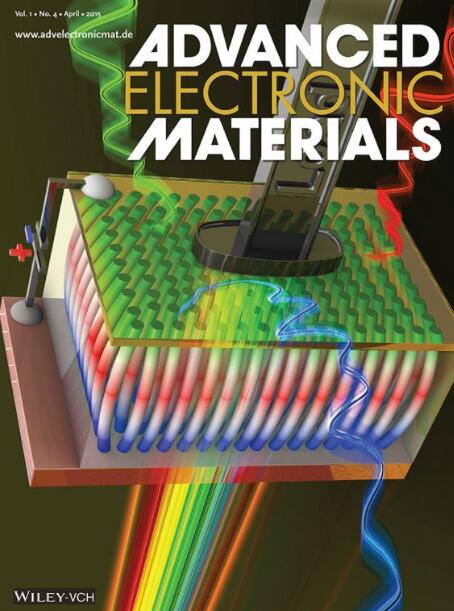Highly Efficient Current‐Induced Torques Originating from Topological Surface States in Sb2Te3
IF 5.3
2区 材料科学
Q2 MATERIALS SCIENCE, MULTIDISCIPLINARY
引用次数: 0
Abstract
Topological insulators (TIs) have shown great promise for the development of energy‐efficient and ultra‐fast spintronic devices leveraging charge‐spin interconversion (CSIC) mechanisms. Among them, chalcogenide‐based TIs stand out for their compatibility with wafer‐scale growth techniques. Recent studies have validated the topological properties ofSb2Te3中源于拓扑表面态的高效电流感应转矩
拓扑绝缘体(TIs)在利用电荷-自旋相互转换(CSIC)机制开发节能和超快自旋电子器件方面显示出巨大的前景。其中,硫系化合物基ti因其与晶圆级生长技术的兼容性而脱颖而出。最近的研究证实了通过金属有机化学气相沉积在4英寸晶圆上生长的Sb2Te3薄膜的拓扑特性。为了将基于Sb2Te3的器件推向实际应用,必须在小型化电子器件的电荷电流注入下评估CSIC效率。本研究研究了Sb2Te3/Au/Co/Au中自旋轨道转矩(SOT)和磁阻响应。结果表明,Sb2Te3产生的SOT作用于Co的效率很高,自旋霍尔角高达62.8±3.2,自旋霍尔电导率高达3.6±0.2 × 106。这些发现强调了Sb2Te3 TI作为高效自旋电子器件的主要候选材料的潜力,为其集成到新型功能器件中提供了坚实的基础。
本文章由计算机程序翻译,如有差异,请以英文原文为准。
求助全文
约1分钟内获得全文
求助全文
来源期刊

Advanced Electronic Materials
NANOSCIENCE & NANOTECHNOLOGYMATERIALS SCIE-MATERIALS SCIENCE, MULTIDISCIPLINARY
CiteScore
11.00
自引率
3.20%
发文量
433
期刊介绍:
Advanced Electronic Materials is an interdisciplinary forum for peer-reviewed, high-quality, high-impact research in the fields of materials science, physics, and engineering of electronic and magnetic materials. It includes research on physics and physical properties of electronic and magnetic materials, spintronics, electronics, device physics and engineering, micro- and nano-electromechanical systems, and organic electronics, in addition to fundamental research.
 求助内容:
求助内容: 应助结果提醒方式:
应助结果提醒方式:


